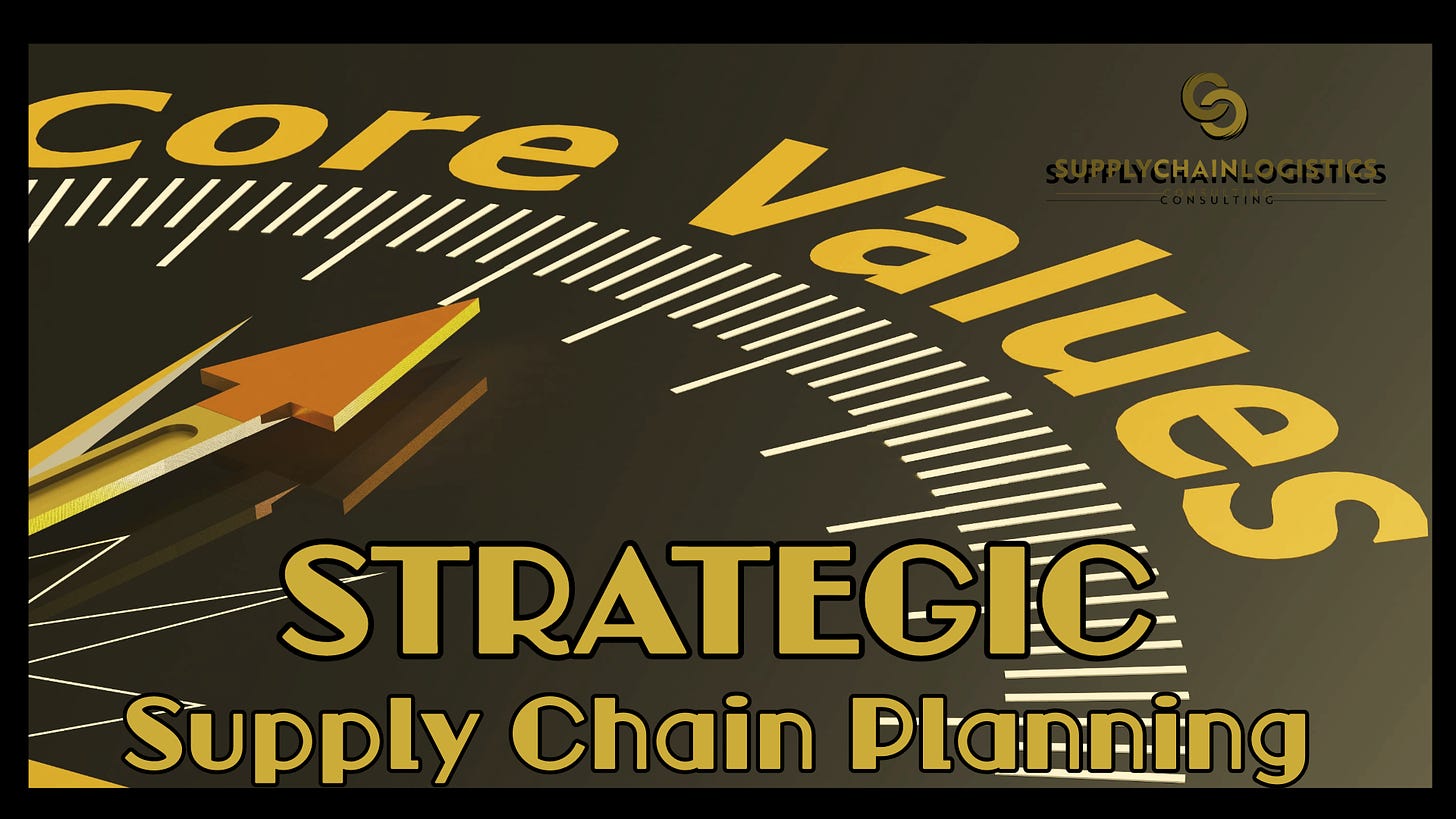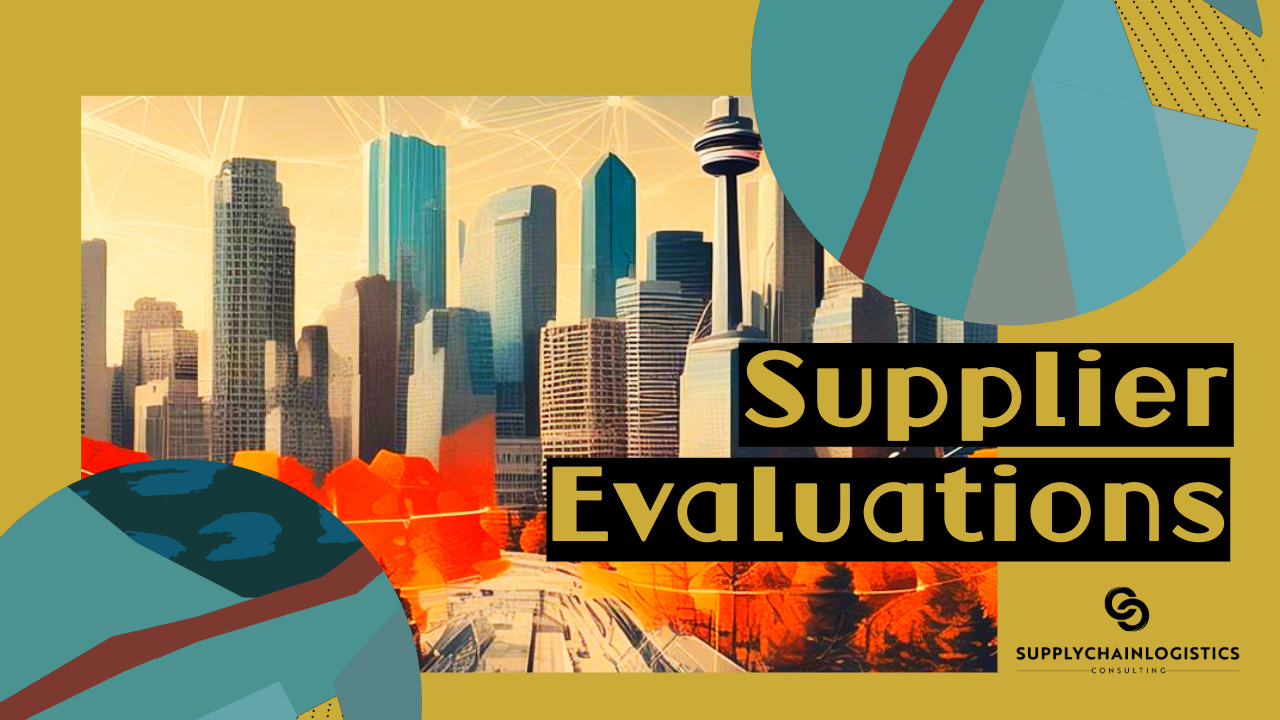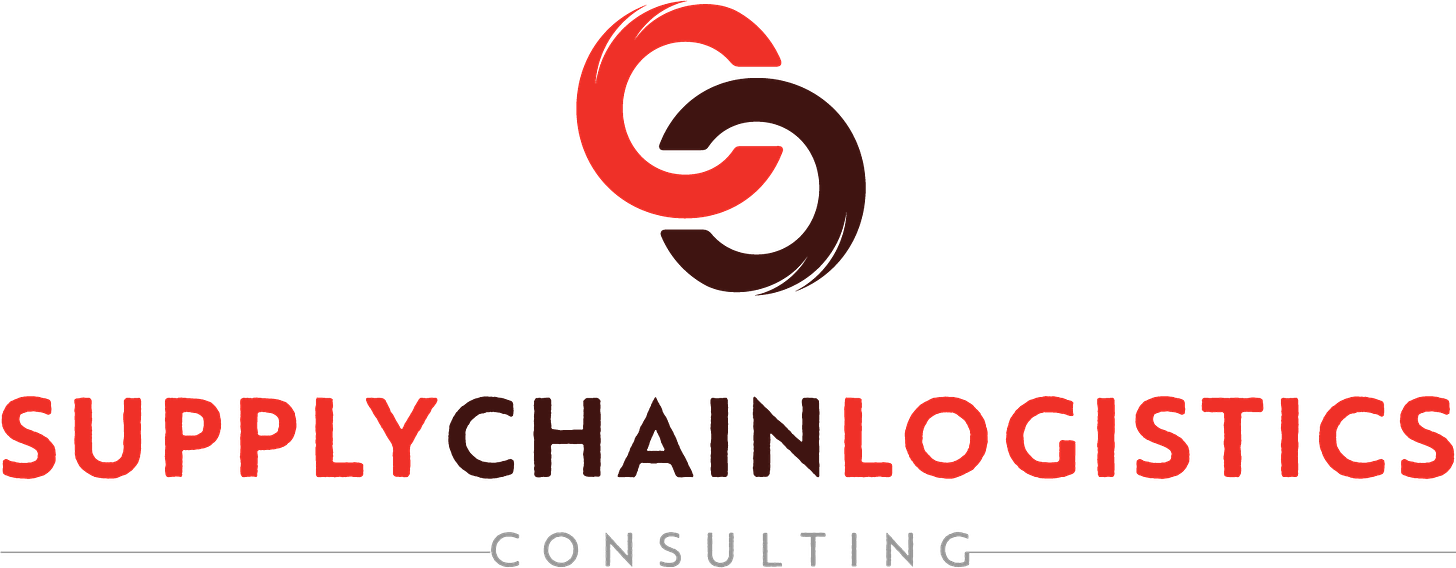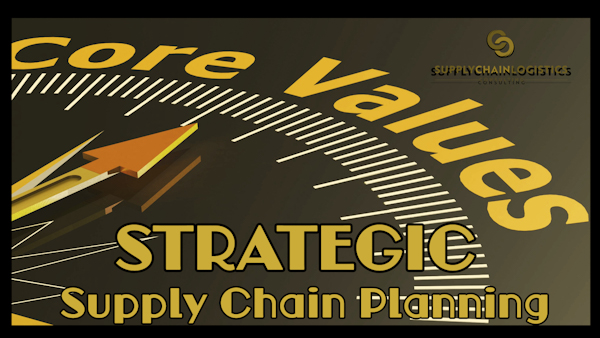Achieving Resiliency. Part 2
“Making Value-Based Decisions in Procurement”
In this two-part business paper readers can sharpen their understanding of how supply chain resilience is achieved using the elements of procurement such as strategic sourcing, and supplier evaluations. See how a more robust vendor selection process leads organizations towards attaining positive results related to profitability, innovation, and risk avoidance.

Value-Based Decisions in Procurement
Understanding Value-Based Purchasing:
Value-based purchasing is a strategic procurement approach that focuses on acquiring goods and services based on their value proposition, rather than just their price. This approach to sourcing emphasizes the importance of considering long-term benefits, total cost, and the overall value a supplier can bring to a business. In this article, we may use ‘value based purchasing’ and ‘value based procurement’ interchangably where the focus is on establishing the strategic role of procurement. This should help to correct the mistaken view of categorizing purchasing decsions within administrative tasks rather than as a function with critical importance to the compnay’s strategic alignment and the ability to drive up profitability.
Why Take a Total-Value Approach in Purchasing Decisions?
Traditional purchasing approaches often prioritize short-term savings over long-term value and quality. On the other hand, value-based purchasing enables supply chain management procurement professionals to make more informed decisions by considering a broader array of factors, such as supplier reliability, quality, sustainability, innovation, that will help to measure the total value provided to the company from each supplier
Benefits of Value-Based Purchasing
Enhancing Supplier Relationships: By adopting a value-based purchasing strategy, you can foster strong and mutually beneficial relationships with your suppliers. This approach encourages collaboration, leading to improved communication, increased trust, and even potential cost savings down the line.
Quality Assurance: Value-based purchasing emphasizes quality, ensuring that your supply chain operations are fueled by reliable suppliers who meet your standards consistently. This minimizes the risk of disruptions, delays, and customer dissatisfaction caused by subpar products or services.
Driving Innovation: When you prioritize value over price, suppliers are motivated to innovate and continuously improve their offerings. By aligning with innovative suppliers, you can stay ahead of the curve in a rapidly evolving industry, gaining a competitive edge.
Sustainable Practices: Value-based purchasing promotes sustainable and socially responsible practices. By choosing suppliers who prioritize sustainability and ethical considerations, you can contribute to a greener future while enhancing your brand reputation.
Total Cost of Ownership: While price is undeniably important, value-based purchasing encourages supply chain professionals to look beyond the upfront cost and consider the total cost of ownership. This inclusive approach considers factors such as maintenance, support, and potential risks, helping you make more cost-effective decisions.

Why Do Supplier Evaluations Matter?
Mitigating Risks and Increasing Resilience
Business leaders must apply a multi-faceted approach to mitigate supply chain risks effectively through supplier evaluation and selection processes. In essence, a robust framework of best practices and important considerations should be available to guide the process with standards for compliance, risk avoidance, risk mitigation and alternative solutions.
Integrating insights from industry-leading organizations and leveraging both qualitative and quantifiable information will provide a basis for developing a supplier evaluation framework that aligns with the requirements for value-based decision making as it applies to the company’s specifications and objectives. The ability to predict and plan for disruptive impacts to supply chain management is critical to ensuring the correct approach to strategic planning, sourcing, criteria development, and supplier selection.
Incorporating Best Practices into a Supplier Evaluations
Drawing from industry best practices can yield significant benefits when creating a comprehensive supplier evaluation framework for each company. Best practices include taking steps to consider a multitude of factors such as reliability, quality, agility, scalability, sustainability, and innovation, business leaders can effectively assess potential suppliers’ capabilities and better understand their overall value proposition.
Embracing a strategic, cross-sectional approach that uses multiple methods for an evaluation can enhance the robustness of supplier assessments and improve the reliability of results from a selection process. This is another dimension to value-based procurement decision-making that emphasizes the long-term benefits, best fit, and overall value a supplier can bring to the organization.
The Role of Analysis in Risk Management
Implementing analytical techniques that account for both desirable and undesirable results can provide an in-depth understanding of supplier performance where it relates to the company’s current objectives. Furthermore, integrating a risk management framework into the supplier evaluation process is imperative to ensure the minimum acceptable standards are met. By leveraging continuous risk management practices, companies can proactively address disruptions and build resilience within their supply chains.
The merging of quantitative data, industry best practices, and risk management frameworks, can propel organizations toward a more value-centric and strategic approach for supplier evaluations. In addition to mitigating risk, this approach also fosters development of sustainable, resilient, and innovative supply chains. It is essential for executive management to prioritize these considerations and embed them into their supply chain management and procurement strategies.
As it relates to operating a business successfully, leaders are advised to prioritize finding affordable, reliable, high-quality suppliers is crucial. Supplier evaluation is the process of assessing and analyzing potential suppliers to determine their suitability for your business needs. It helps you identify the right partners who can provide quality products or services on time, at a fair price, and in compliance with the specified quality standards.

The Benefits of Supplier Evaluations:
1. Quality Assurance:
Ensure that the products or services suppliers will provide are going to meet the specified quality standards by validating the suppliers. Avoid potential issues such as customer complaints with clear expectations for the supplier’s capabilities and future performance based on validated information.
2. Cost Savings:
Supplier evaluation can also help you identify suppliers who offer competitive prices. Comparing different suppliers provides opportunities to negotiate better agreements and potentially reduces the price of essential purchases.
3. Reliability:
Fulfilling customer orders is the first indicator of excellence in customer service. Evaluating suppliers helps you find those who consistently deliver on time and to specification, ensuring that you can meet your customers’ demands without any unnecessary delays.
4. Innovation and Expertise:
Gain expertise and ignite innovative solutions with knowledge from suppliers learnt through the process of conducting a supplier evaluation. Specialized suppliers with subject matter expertise or with an abundance of market intelligence such as those regarding industry trends, can provide valuable insights that improve the company’s competitive position.
5. Risk Mitigation:
Understand potential risks associated with suppliers through the evaluation process, such as financial stability, sustainability practices, and a supplier’s level of compliance with regulations. Companies can avoid unplanned disruption to business operations or events that have negative implications for brand reputation. Mitigating these risks can preserve revenue and act as a positive indication that the company is reliable to potential customers and investors.
Overview of a Supplier Evaluation Process:
Here is a brief overview of how to complete a supplier evaluation:
Identify and Involve Required Stakeholders:
When required, participants in an evaluation committee are chosen in advance of a sourcing process and may not include all the parties involved when developing evaluation criteria, nor should it. Identifying comprehensive criteria requires information gained through seeking input from many perspectives and an understanding of the scope of the project for which the procurement is required.
The stakeholders for sourcing projects may include and are not limited to procurement professionals, subject matter experts, financial controllers, project managers, authorized signatories, end-users or their representatives, authorities for product safety, quality assurance, environmental standards, regulatory compliance, government, and internal approvals.
Document Minimum Standards and Define the Criteria for Procurement:
Determine the criteria important to all the relevant business unit stakeholders, such as quality, price, function, compatibility, delivery time, sustainability, disposal, cost of replacement parts, maintenance and repairs, service warranties and customer support. This will help to evaluate suppliers based on factors that align with corporate standards and minimum requirements. Scope development is an opportunity to evolve the procurement project beyond the basic price analysis and to establish any additional parameters for experience, capacity, or minimum requirements.
Business leaders must understand that the supplier criteria is integrated into the Request for Proposal (RFP) documentation. The RFP is later converted into the actual contract agreement between the company and the supplier once the contract is awarded and signing is complete. This means that the request for supplier information must be specific, concise, and accurately described prior to presenting the RFP for suppliers to bid on. The application process may include opportunities for suppliers to seek clarification for certain elements such as the criteria, however this should be as a matter of necessity and the documentation should be approached with as much accuracy as possible without requiring that extra step.
Research the Market and Shortlist Potential Suppliers:
Conduct thorough research to identify potential suppliers and use available industry benchmarking information to guide this initial selection, likewise the market may be queried to ask for interested suppliers to put forward an expression of interest and gain more information of available solutions. Consider online directories, industry forums, buyers’ groups, past purchasing data, and recommendations from trusted sources. Shortlist suppliers that have met the minimum standards and have existing capacity or potential to meet the required scope for the procurement.
Requests for Proposals and/or Requests for Quotations:
Contact the shortlisted suppliers and request detailed proposals and/or quotes from them. At this stage, the draft of your criteria should be predetermined with all of the essential requirements, standard criteria, nice-to-have inclusions, features or compatibility details, and pricing thresholds, well established for this procurement project. The document produced for the request will contain all of the information needed to produce an integrated contract with the specifications for relevant certifications, testimonials, service records and/or samples to better understand their capabilities, limitations and clarify expectations.
A comprehensive general contract in which the request for proposal will be contained, allows for anticipated modifications such as term extensions or work orders to follow the contract signing without necessarily making major changes to the initial scope. The initial agreement and the request for proposal document with all supplier criteria included, should be as open to performance of the work as possible yet still contain the essential requirements for supplier qualification and compliance. This approach allows for unrestricted application of the general terms and conditions to the new supplier relationship and once complete, the contract can also include information such as, supplier rates or pricing tables, delivery details, milestone payments, minimum service levels, and other specific information pertaining to the products and/or the work.
Conduct Interviews, Obtain Samples, and Schedule Site Visits:
When required to obtain clarity, arrange meetings or video conferences to familiarize the evaluation team with potential suppliers and to understand the solutions they offer. This is an opportunity to ask pointed questions about supplier processes, production capacity, and to clarify any specific requirements. If feasible, validate critical elements such as compliance with safety standards or to ensure compatibility of new suppliers with a site visit to evaluate supplier facilities, meet with the management team, and to observe the workplace in person.
Evaluate and Compare: The final stage in the process is the consideration of suppliers offer called the ‘bid’. This may be completed in its entirety or partitioned into components such as the proposal offer, the financial information, and/or other factions such as critical elements for environment, engineering and capacity to deliver. Evaluators will carefully assess each offer, using scorecards, previously established criteria, and generate quantifiable rankings that consist of a combined tally from rating the information gathered from each supplier. Numerical values, pass or fail criteria, all contribute to establishing the pros and cons of each option. Final decisions are made to select the supplier that achieves the highest ranking for the winning bid.
By following an ethical decision-making process that is deliberate and was prepared using carefully selected standards, criteria and evaluation methods, a contract awarded to a supplier for the supply of goods or services will meet the business requirements and may serve to increase the total value obtained, as well.
To Summarize….
Implementing Value-Based Sourcing:
Top performing companies need to remain attuned to advances in industry practices, regulation, and technologies important to market competition. Business leaders that are focused on integrating the recommended methods into a company will improve the decision-making process for critical resources. They do this by by maintaining a higher potential for greatest overall value obtained from strategic procurement activities.
Supplier Evaluations Contribute to Operational Resilience
Supplier evaluation is undoubtedly one of the most important facets of the procurement function and the results of supplier selection has impacts that are felt throughout the entire business and externally on customers, the environment, communities and industry.
Continue Improving.
It is recommended that business leaders routinely revisit the processes and policies that guide the company’s supplier selection by using these practices as strategic opportunities to create excellent products and services.
Identify Key Factors:
Determine the most critical factors that align with the company’s goals and industry requirements, such as quality, reliability, sustainability, and innovation.
Evaluate Suppliers:
Analyze potential suppliers for important factors, complete thorough research of industry benchmarks and standards, and carefully consider inclusion of criteria beyond pricing.
Negotiate Contracts:
Ensure that supplier contracts reflect the standards expected fand provisions for non-performance, include service levels, quality measurements, and ongoing compliance requirements.
Monitor and Collaborate:
Regularly monitor supplier performance, maintain communication to identify and manage issues or exploit opportunities for improvement, update processes and apply new solutions.
By investing time and effort in selecting the right suppliers and managing the vendors performance over time, supply chain managers and company executives can support strategic actions that assure procurement processes successfully align with corporate objectives.

————————————————————————————–
QUOTATIONS
Building a resilient enterprise should be a strategic initiative that changes the way a company operates and increases its competitiveness. Reducing vulnerability means reducing the likelihood of a disruption and increasing resilience — enhancing the organization’s ability to bounce back from a disruption.
Resilience, in turn, can be achieved by either creating redundancy or increasing flexibility.
While some redundancy is part of every resiliency strategy, it represents sheer cost with limited benefit unless it is needed due to a disruption. Flexibility, on the other hand, can create a competitive advantage in day-to-day operations.
Rice, D,J. and Sheffi, Y., 2005
https://sloanreview.mit.edu/article/a-supply-chain-view-of-the-resilient-enterprise/
——————————————————————————————
The study further provides a counterpoint to the existing perspective within the supply chain risk management literature that institutional experience of managing past supply chain disruption events prepares the organization to deal with future disruption events. By adopting industry 4.0 capabilities, firms can develop supply chain risk resilience from disruption events.
Singh N., and Singh, S.
https://www.emerald.com/insight/content/doi/10.1108/BIJ-10-2018-0346/full/html
References
CIPS, The Chartered Institute of Procurement & Supply. Website. Accessed 2024-07-22. Available at: https://www.cips.org/intelligence-hub/procurement/what-is-procurement.
Dunn, A G., & Testa, N M J. (n.d). Sovereign Supply Chains & Essential Reshoring. Available at: https://gdiconsult.com/images/blog/65694ba9e56bc/pdf/Sovereign-Supply-Chains-And-Essential-Reshoring.pdf
Nair, A., Jayaram, J., & Das, A. (2015, June 11). Strategic purchasing participation, supplier selection, supplier evaluation and purchasing performance. https://doi.org/10.1080/00207543.2015.1047983
Pal, O., Gupta, A K., & Garg, R. (2013, September 1). Supplier Selection Criteria and Methods in Supply Chains: A Review. https://zenodo.org/record/1088140
Rice, D, J. and Sheffi, Y. (2005) “A supply chain view of the resilient enterprise,” MIT Sloan Management Review, 47(1),p. 41-48. Available at: https://sloanreview.mit.edu/article/a-supply-chain-view-of-the-resilient-enterprise/
Rice, D, J. and Sheffi, Y. (2005) A supply chain view of the resilient enterprise. Available at: https://dialnet.unirioja.es/servlet/articulo?codigo=1328931
Sheffi, Y. (2006) The resilient enterprise: overcoming vulnerability for competitive advantage. Available at: https://doi.org/10.5860/choice.43-3481.
Singh, N.P. and Singh, S. (2019), “Building supply chain risk resilience: Role of big data analytics in supply chain disruption mitigation”, Benchmarking: An International Journal, Vol. 26 No. 7, pp. 2318-2342. Available at: https://doi.org/10.1108/BIJ-10-2018-0346 .




